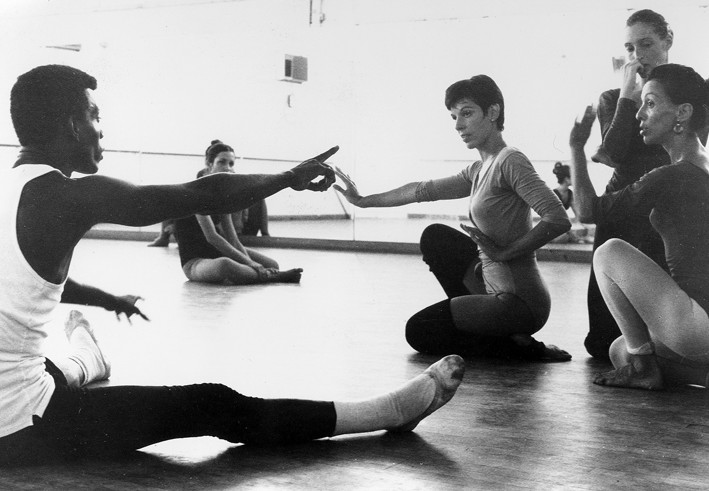“I talked to Linda Hodes and she would be delighted to meet with you,” renowned Martha Graham Company veteran and founder of the UC Berkeley Dance department Marni Wood told me on June 10, 2014. Marni and I had chatted over coffee (at her favorite spot, the now late lamented Village Den on West 12th Street) when I was just getting started on the epic journey of Martha Graham – When Dance Became Modern (Alfred A. Knopf, N.Y. 2022). Needless to say, I was thrilled. “Linda is the dancer who knew Martha the longest of any of us who worked with her. She knew Martha first as a teenaged student back in the 1940s, danced with her in the 50s through the 60s, and then assisted her until the end of her life.”
“She is a remarkable woman,” Marni went on, “extremely down to earth but with a very deep and fundamental understanding of Martha’s creative genius and so perceptive about the very human side of Martha. Linda was a stunning soloist in the Company and danced many roles built specifically for her — and she was also the one among us who could immediately step in if someone needed to be replaced because she was so versatile, quick and always in the moment.”
The first of my several tete a tetes with Linda Hodes took place shortly thereafter, and we met several times during the ensuing decade in her modest apartment on East 77th Street. Our talks always traversed the same trail — beginning with her apologies that “I don’t know if I can be of much help…how much I can remember,” then gradually opening up, particularly about the counterbalances between Graham’s rigorous and often harsh choreographic pedagogy and her need to turn to Linda in search of a trusted offstage friend,
“I look forward to your final version of the whole story,” she said, her gaze fixed upon as-yet unrevealed moments and movements while she patted me on the shoulder as I left. “This girl out of nowhere,” she breathed inward, “Martha — emerging as an artist way beyond expectations.”
I’m recalling just one illustrative incident. I sent Linda a draft of my late chapter on Graham’s disposition in the Studio during her final decade and received this corrective in return: “One tiny doubt,” Linda began, with characteristic politesse. “Except in an airport transferring between gates I never ever saw Martha in a wheelchair. She was far too vain. In her last years, she would toddle into the Studio and fall into her white canvas chair from which she conducted rehearsals — inspiring a youthful and avid Company many generations younger than she was.”
A couple of years ago, on what I could not have known would be my final visit, Linda walked me to the door, as was her habit, through a dark vestibule adorned with a few vintage pictures like the one at the top of this post recapturing her mid-60s teaching at Batsheva Dance Company in Israel. “You’d better hurry up with that book of yours, Neil,” she declared. “I’m not going to be around forever, you know!”
